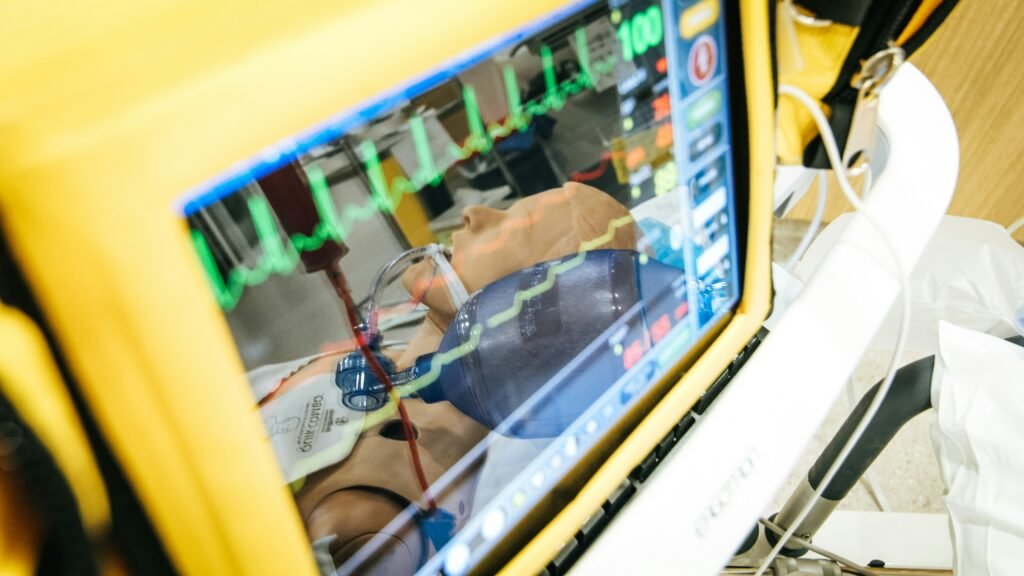Imagine being a 12-year-old boy with sickle cell disease, living with the constant interruption of pain and the stealing of dreams. This is the reality for Kendric Cromer, a brave young boy from Washington, D.C., who recently became the first person in the world with sickle cell disease to begin a commercially approved gene therapy. With the start of Kendric’s monthslong medical journey, there is renewed hope for the estimated 20,000 people in the United States who qualify for the treatment. For Kendric, this therapy offers a chance for a normal life, free from the limitations and pain caused by his condition.

Background on Sickle Cell Disease
Sickle Cell Disease is a genetic disorder of red blood cells that causes debilitating pain and other medical problems. It is caused by inheriting the mutated gene for the condition from both parents. The disease primarily affects Black individuals, with an estimated 100,000 people in the United States living with sickle cell. Symptoms include episodes of searing pain, fatigue, infections, delayed growth, and vision problems. Complications can arise, including organ damage, stroke, and even death.
Introduction to Gene Therapy
Gene therapy is a cutting-edge medical treatment that aims to repair or replace faulty genes in order to treat or prevent genetic diseases. It involves introducing new genetic material into a person’s cells to replace or supplement the mutated or missing genes. The principles of gene therapy revolve around targeting the root cause of the genetic disease and providing a long-term solution rather than simply treating the symptoms.
Gene therapy works by using vectors, usually viruses, to deliver the therapeutic genetic material into the patient’s cells. These vectors are modified to be harmless and carry the desired genetic material to the target cells. Once inside the target cells, the therapeutic genes can produce the missing or correct version of the protein, which can help alleviate the symptoms or potentially cure the genetic disease.
Gene therapy has shown promise in treating various genetic diseases, including inherited disorders like sickle cell disease. By targeting the genetic root cause, gene therapy has the potential to provide a long-lasting and potentially permanent solution for patients.
FDA Approval of Sickle Cell Gene Therapy
The FDA approval process for gene therapy involves extensive preclinical and clinical studies to ensure the safety and efficacy of the treatment. The process includes evaluating data from animal studies, manufacturing processes, and human clinical trials. The goal is to ensure that the gene therapy is safe, effective, and the benefits outweigh any potential risks.
In December of last year, the FDA authorized two companies, Bluebird Bio and Vertex Therapeutics, to sell gene therapy for the treatment of sickle cell disease. This marked a significant milestone in the field of gene therapy, as it was the first approval for a genetic disease that affects a significant population. The authorization opens up new possibilities for patients with sickle cell disease and provides hope for a potential cure.
The FDA approval for gene therapy in sickle cell disease is important for patients as it offers a new treatment option that addresses the underlying cause of the disease. It provides hope for improved quality of life and potentially a cure for those living with sickle cell.
Bluebird Bio’s Gene Therapy
Bluebird Bio is a biotechnology company based in Somerville, Massachusetts, focused on developing gene therapies for severe genetic diseases. Their gene therapy treatment for sickle cell disease, called LentiGlobin, aims to provide a functional copy of the hemoglobin gene to replace the faulty one in patients with sickle cell.
The treatment involves extracting the patient’s own bone marrow stem cells, which are then modified to contain the functional hemoglobin gene using a viral vector. These modified stem cells are then infused back into the patient’s bloodstream, where they can migrate to the bone marrow and produce healthy red blood cells.
Clinical trials for Bluebird Bio’s gene therapy have shown promising results. Patients who received the treatment experienced a reduction in the frequency and severity of pain crises and improved overall quality of life. While the treatment is not a cure, it offers a potentially life-changing option for patients living with sickle cell disease.

Kendric Cromer: The First Patient
Kendric Cromer, a 12-year-old boy from the Washington, D.C. area, was the first commercial patient to receive Bluebird Bio’s gene therapy for sickle cell disease. Kendric had been living with the daily challenges of sickle cell, with activities such as riding a bike or playing sports causing episodes of excruciating pain.
Kendric was chosen as the first patient for several reasons. Firstly, he met the eligibility criteria for the treatment, which included having severe symptoms and a lack of alternative treatment options. Additionally, his parents were fully supportive and committed to the treatment process, which is crucial for successful gene therapy.
The process of Kendric’s treatment began with the extraction of his bone marrow stem cells, which were then sent to a laboratory for gene editing. The modified stem cells were then reinfused into Kendric’s bloodstream. The hope is that these modified cells will produce healthy red blood cells, reducing the symptoms and complications associated with sickle cell disease.
Patient Perspectives on Gene Therapy
Other sickle cell patients who have received gene therapy treatments have shared their testimonials, offering insights into their experiences and expectations. Many express hope and optimism for the potential of gene therapy to improve their quality of life and provide long-term relief from the symptoms of sickle cell.
Patients hope that gene therapy will reduce the frequency and severity of pain crises, decrease their reliance on pain medications, and enable them to engage in activities they were previously unable to enjoy. They also have expectations for improved energy levels, reduced hospitalizations, and overall better physical and emotional well-being.
While there is enthusiasm for gene therapy, patients also have concerns and challenges. Some worry about the potential long-term effects and risks associated with gene therapy, including the durability of the treatment and the possibility of unforeseen side effects. Additionally, there are concerns about the affordability and accessibility of gene therapy, especially for those without adequate insurance coverage or limited financial means.

Impact of Gene Therapy on Sickle Cell Community
Gene therapy has the potential to bring significant benefits to patients and their families within the sickle cell community. Improved quality of life, reduced pain episodes, and increased independence are just a few of the potential benefits for patients. Families may experience reduced stress and anxiety associated with managing the disease and may no longer have to make difficult decisions about treatment options.
The potential of gene therapy to revolutionize the treatment of sickle cell disease cannot be overstated. By targeting the genetic root cause of the disease, gene therapy offers the possibility of a cure rather than just managing symptoms. This has the potential to transform the lives of patients and their families, providing hope for a future free from the burdens of sickle cell.
One critical aspect of the impact of gene therapy on the sickle cell community is addressing the disparities in access. Ensuring that gene therapy is accessible and affordable to all individuals, regardless of their socioeconomic status or geographical location, is essential to providing equitable care. Efforts to increase awareness, advocate for insurance coverage, and support research and development are crucial for addressing these disparities.
Other Gene Therapy Approaches for Sickle Cell
In addition to Bluebird Bio’s gene therapy, another company called Vertex Therapeutics has also received FDA authorization for the treatment of sickle cell disease. Vertex’s therapy is based on CRISPR gene editing technology and aims to correct the mutated hemoglobin gene directly.
Vertex Therapeutics has not disclosed whether they have started treating patients with their approved gene therapy. The company’s approach differs from Bluebird Bio’s in terms of the gene editing technology used and the specific genetic targets.
Both gene therapies offer potential solutions for patients with sickle cell disease, but further research and clinical trials are needed to fully understand their efficacy and long-term effects. The field of gene therapy for sickle cell is evolving rapidly, and ongoing development and evaluation of different approaches are essential for maximizing the benefits for patients.
Future of Sickle Cell Gene Therapy
The future of sickle cell gene therapy holds promise for further advancements and improved outcomes for patients. Research and development efforts are underway to refine existing treatments and explore new approaches. These efforts aim to improve the safety, effectiveness, and accessibility of gene therapy for sickle cell disease.
Long-term effects and sustainability of gene therapy are ongoing areas of study. Monitoring patients over an extended period will provide valuable data on the durability and efficacy of the treatment. This information can help guide future advancements and inform clinical decision-making.
While gene therapy offers hope for a potential cure for sickle cell disease, it is essential to continue supporting ongoing research and development. Funding, awareness, and advocacy play crucial roles in advancing the field and ensuring that promising treatments reach the patients who need them most.
Conclusion
Kendric Cromer’s journey as the first commercial patient for Bluebird Bio’s gene therapy for sickle cell disease represents a significant milestone in the field. The approval of gene therapy for sickle cell by the FDA offers hope for those living with the disease and their families.
The implications of gene therapy for the future of sickle cell treatment are vast. The potential to provide long-term relief, improve quality of life, and potentially cure the disease is transformative. Ongoing research, development, and support are crucial to maximizing the benefits of gene therapy and addressing the challenges and disparities in access.
As gene therapy continues to evolve and mature as a treatment option, it holds promise for revolutionizing sickle cell care and providing hope for a brighter future for patients and their families. It is a testament to the power of scientific advancements and the human spirit to overcome genetic diseases.








